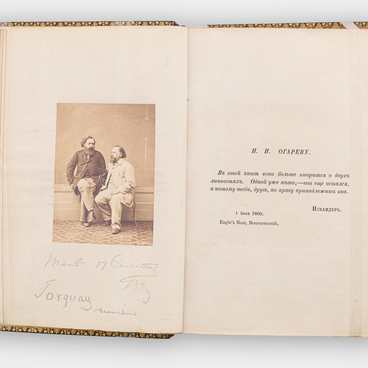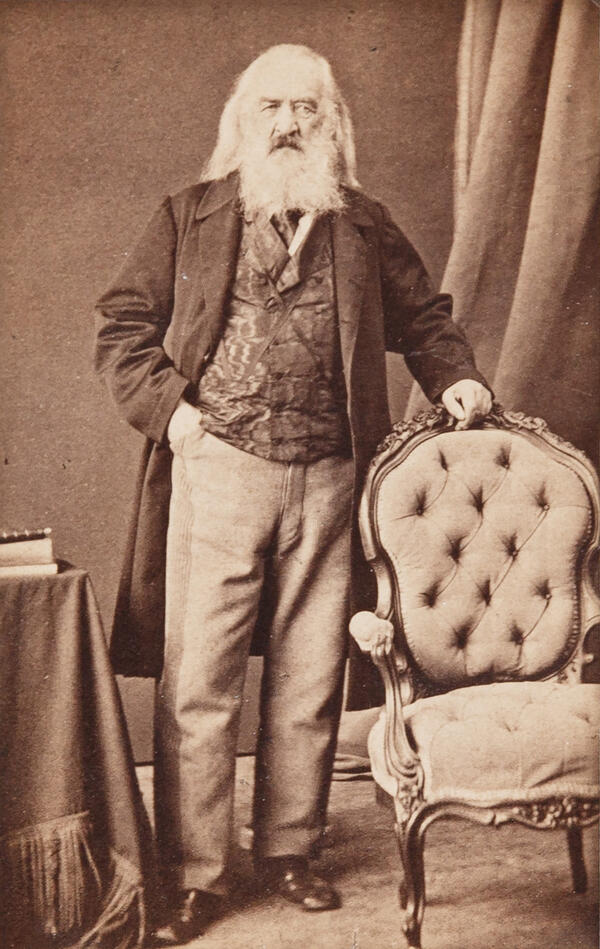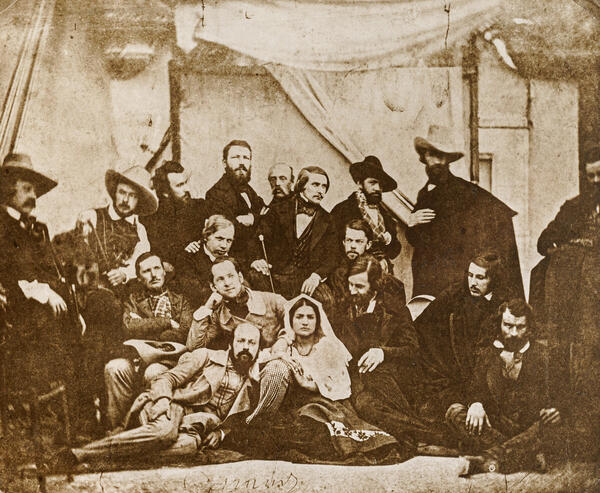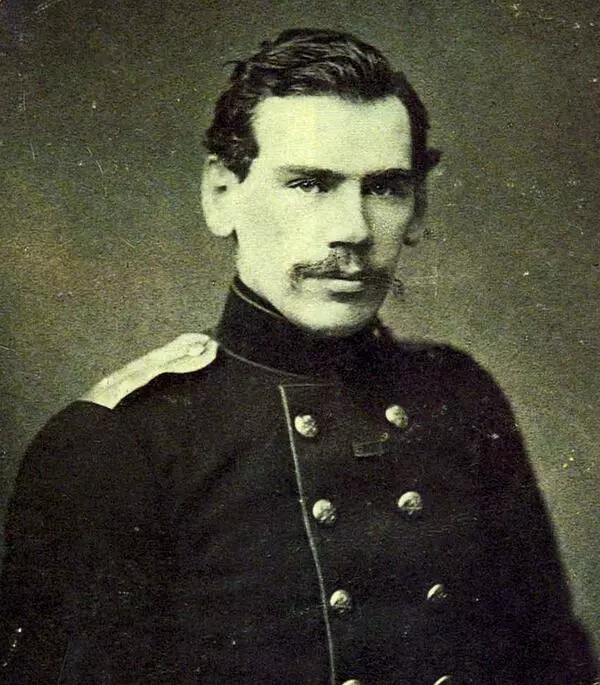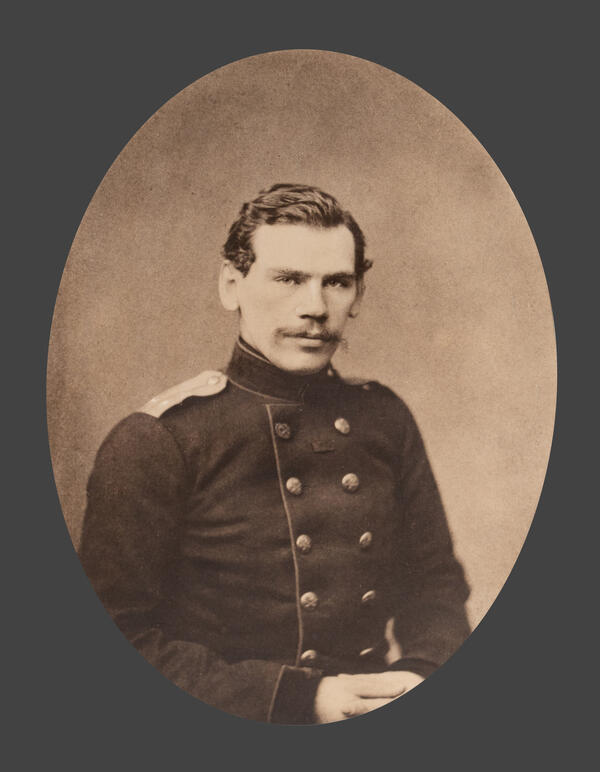This double portrait of Alexander Herzen was made by his cousin Sergey Levitsky. Both men graduated from Moscow State University. Levitsky served in the office of Count Alexander Stroganov, who was the Minister of the Internal Affairs. Levitsky became interested in daguerreotype when he was still quite young.
Daguerreotype became the world’s early photographic process based on the photosensitivity of silver iodide. Sergey Levitsky made several daguerreotype views in 1843 during a trip to the Caucasus. He became so fascinated with photography that he soon perfected a French-made lens he owned and the process of taking pictures. He would become the first to retouch negatives on the developed film and the first to use electric lighting in a studio. To top it all off, Levitsky was one of the pioneers of photo collage.
Levitsky opened a photographic studio in Saint Petersburg and then in Paris. He quickly gained fame, so much so that getting an appointment with him became a very difficult task. Unlike his cousin, the photographer was favored by the Russian authorities. In 1877, Levitsky received the title of the Photographer of Their Imperial Highness. In 1890–1894, at the request of Tsar Alexander III, a “photographic house” was built for Levitsky on Kazanskaya Street next to the Kazan Cathedral in Saint Petersburg. Levitsky received many orders and medals in Russia and abroad and was distinguished with numerous prestigious awards at international photographic exhibitions.
The presented joke portrait depicts two Alexander Herzens — the writer seems to be talking to himself. To achieve this effect, Levitsky closed half of the lens to take the first picture. Back then, the image went through the lens to be recorded on a silvered plate. Wet plates were used for taking pictures, and they took 40 seconds to dry. This pause allowed the model to quickly change clothes, move to a different place and strike a pose, and Herzen managed that with ease. Then Levitsky closed the other half of the lens and took the second picture using the same plate, and that is how this portrait was created.
Back then, the excellent quality of the photographs
was achieved through the adjusted optics and the large size of the plate —
16.4×21.6 cm. The large-sized arrays in modern cameras are several times
smaller.

